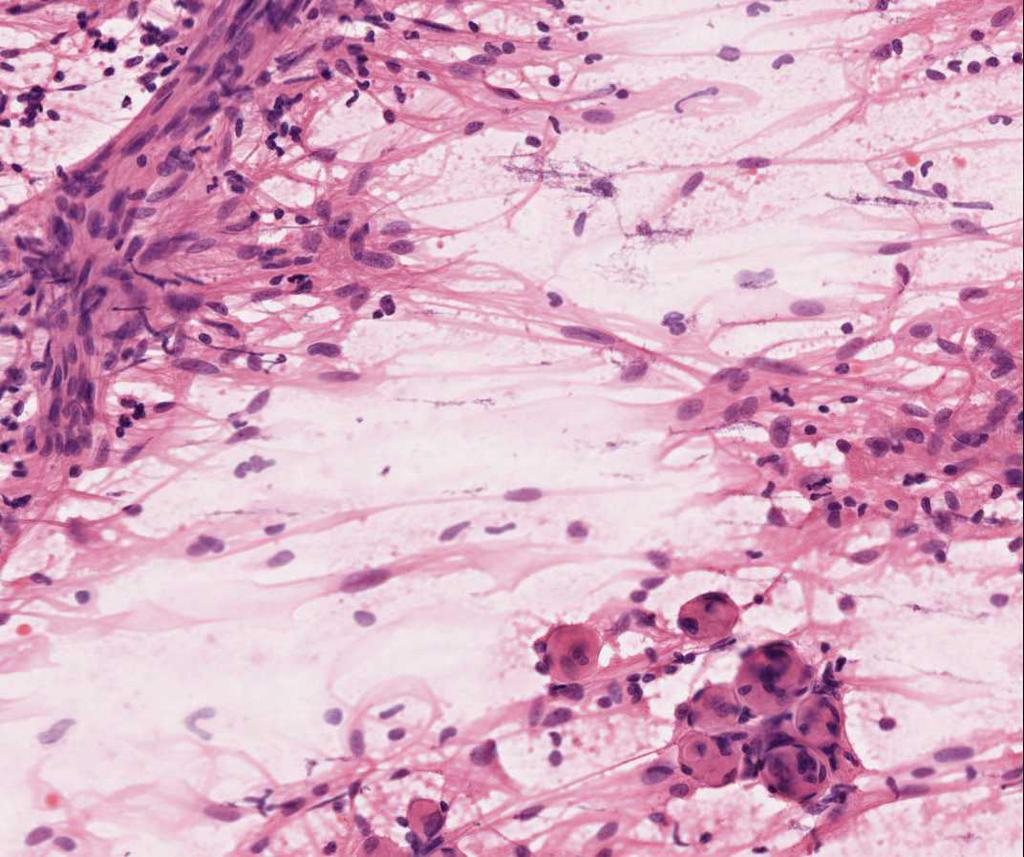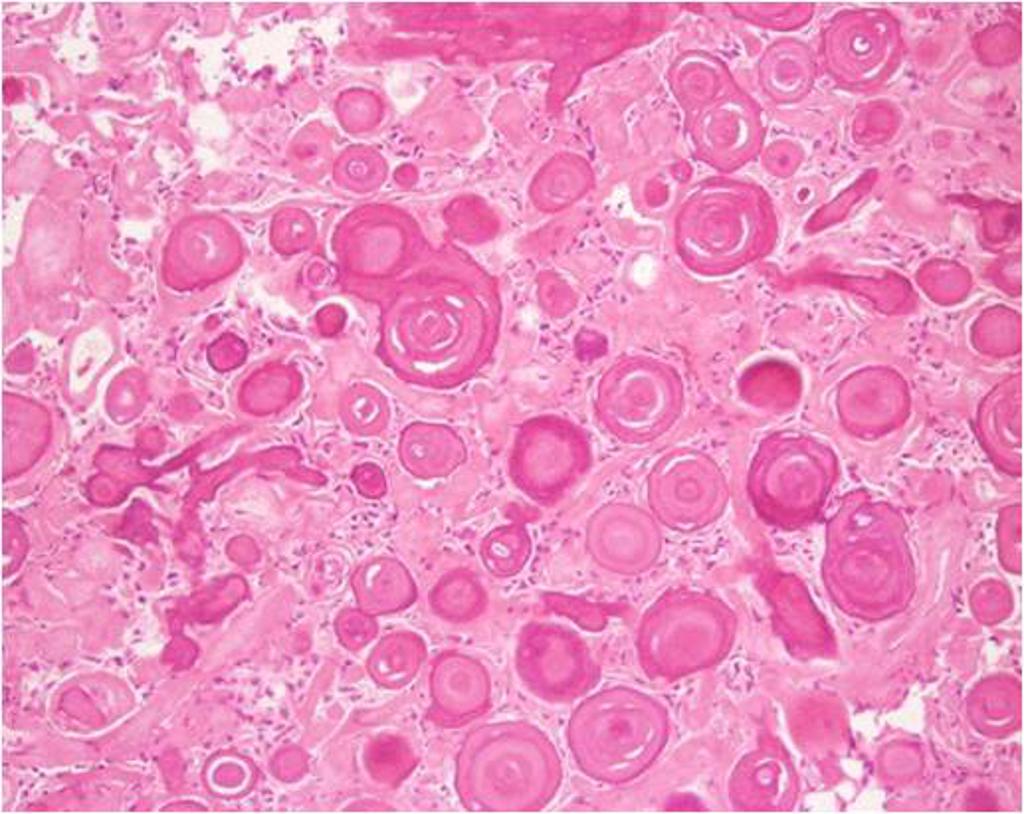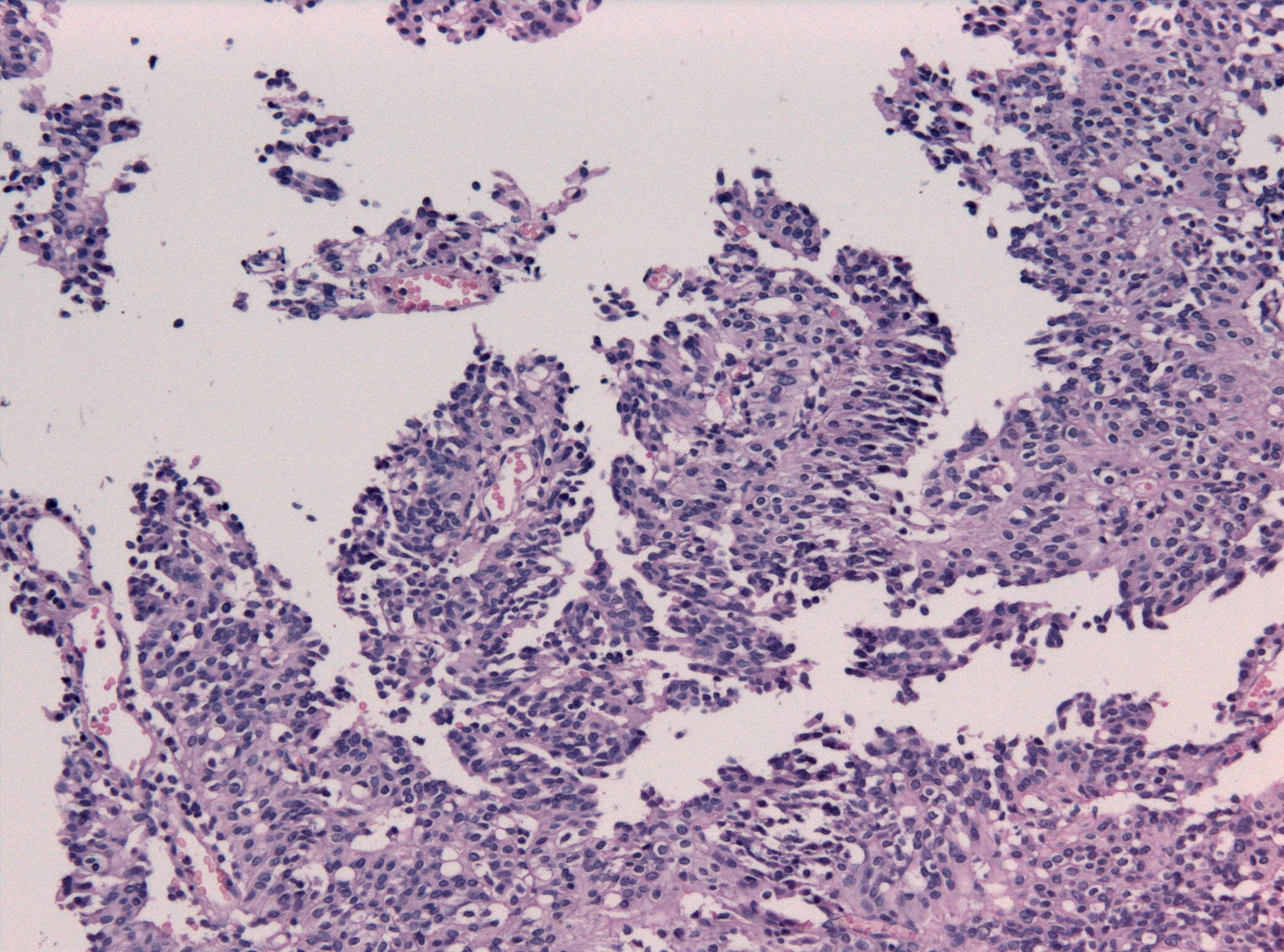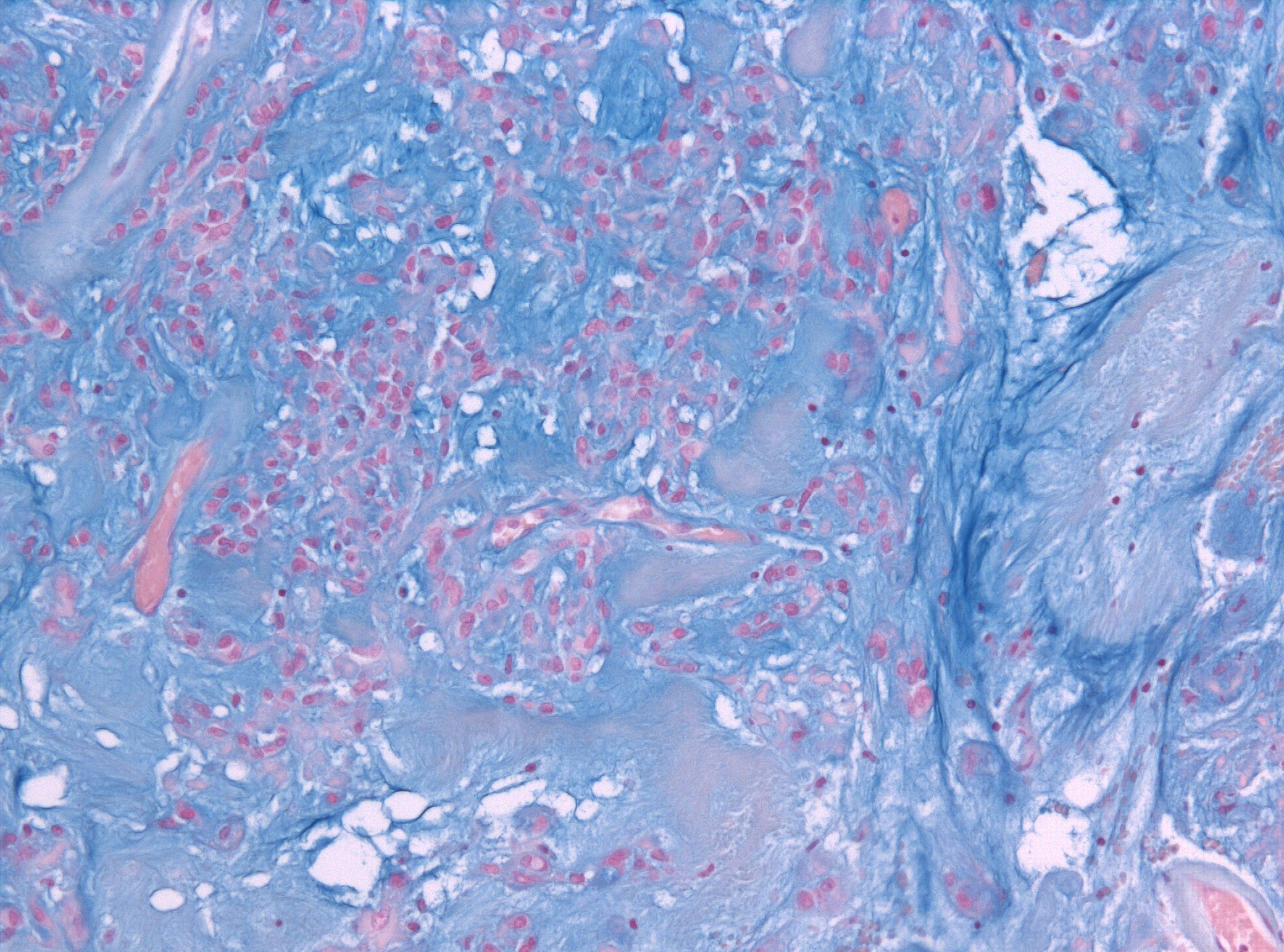Meningioma classification: Difference between revisions
No edit summary |
|||
| (23 intermediate revisions by one other user not shown) | |||
| Line 1: | Line 1: | ||
__NOTOC__ | __NOTOC__ | ||
{{Meningioma}} | {{Meningioma}} | ||
{{CMG}} {{AE}}{{HL}} | {{CMG}} {{AE}} {{IO}} {{HL}} | ||
==Overview== | ==Overview== | ||
Meningioma | Meningioma has been [[Classification|classified]] into 3 groups by the [[World Health Organization|WHO]]: [[benign]] classic meningioma ([[WHO]] grade 1), atypical meningioma ([[World Health Organization|WHO]] grade 2), and [[anaplastic]] [[malignant]] meningioma ([[World Health Organization|WHO]] grade 3). The [[World Health Organization|WHO]] grade 1 group grow very slowly and consists of about 9 variants. About 3 variants correspond to [[World Health Organization|WHO]] grade II, their association with [[Cancer|malignancy]] is not clear but they grow faster than [[benign]] meningiomas. About 2 variants correspond to [[World Health Organization|WHO]] grade III. | ||
==Classification== | ==Classification== | ||
*WHO has classified meningiomas into | *[[World Health Organization|WHO]] has [[Classification|classified]] meningiomas into [[Histology|histological]] and cytomorphological variants. Nine variants correspond to [[World Health Organization|WHO]] grade I which are the [[benign]] classic meningiomas, three correspond to [[World Health Organization|WHO]] grade II which are atypical meningiomas, and three in [[World Health Organization|WHO]] grade III and are [[anaplastic]] [[malignant]] meningiomas.<ref name="HarterBraun2017">{{cite journal|last1=Harter|first1=Patrick N.|last2=Braun|first2=Yannick |last3=Plate|first3=Karl H. |title=Classification of meningiomas—advances and controversies|journal=Chinese Clinical Oncology|volume=6|issue=S1|year=2017|pages=S2–S2|issn=23043865|doi=10.21037/cco.2017.05.02}}</ref> | ||
*The table below lists the subtypes of meningioma according to the [[World Health Organization|WHO]] grades:<ref name="HarterBraun2017">{{cite journal|last1=Harter|first1=Patrick N.|last2=Braun|first2=Yannick |last3=Plate|first3=Karl H. |title=Classification of meningiomas—advances and controversies|journal=Chinese Clinical Oncology|volume=6|issue=S1|year=2017|pages=S2–S2|issn=23043865|doi=10.21037/cco.2017.05.02}}</ref><ref name="ComminsAtkinson2007">{{cite journal|last1=Commins|first1=Deborah L.|last2=Atkinson|first2=Roscoe D.|last3=Burnett|first3=Margaret E.|title=Review of meningioma histopathology|journal=Neurosurgical Focus|volume=23|issue=4|year=2007|pages=E3|issn=1092-0684|doi=10.3171/FOC-07/10/E3}}</ref> | |||
{| style="border: 0px solid #DCDCDC; font-size: 90%; width: 60%;" | {| style="border: 0px solid #DCDCDC; font-size: 90%; width: 60%;" | ||
|valign=top| | | valign="top" | | ||
| | |||
|+ | |+ | ||
! style="background: #4479BA; width: 200px;" | {{fontcolor|#FFF|WHO | ! style="background: #4479BA; width: 200px;" | {{fontcolor|#FFF|WHO Grade }} | ||
! style="background: #4479BA; width: 400px;" | {{fontcolor|#FFF|Subtypes}} | ! style="background: #4479BA; width: 400px;" | {{fontcolor|#FFF|Subtypes}} | ||
|- | |- | ||
| Line 26: | Line 21: | ||
| style="padding: 5px 5px; background: #F5F5F5;" | | | style="padding: 5px 5px; background: #F5F5F5;" | | ||
*Meningothelial, fibrous, [[transitional]], psammomatous,<br> angiomatous, micrcystic, secretory, lymphoplasmacyte-rich, and metaplastic meningioma | *Meningothelial, fibrous, [[transitional]], psammomatous,<br> angiomatous, micrcystic, secretory, lymphoplasmacyte-rich, and metaplastic meningioma | ||
*They are low-grade tumors that grow very slowly and rarely invade the surrounding [[tissues]] | *They are low-grade [[Tumor|tumors]] that grow very slowly and rarely invade the surrounding [[tissues]] | ||
|- | |- | ||
| style="padding: 5px 5px; background: #DCDCDC;font-weight: bold" | | | style="padding: 5px 5px; background: #DCDCDC;font-weight: bold" | | ||
Atypical meningioma<br> (WHO grade 2) | Atypical meningioma<br> (WHO grade 2) | ||
| style="padding: 5px 5px; background: #F5F5F5;" | | | style="padding: 5px 5px; background: #F5F5F5;" | | ||
*Chordoid, clear cell, and atypical meningioma. | *Chordoid, clear cell, and atypical meningioma. | ||
*These are not clearly [[malignant]], but grow faster than benign meningiomas | *These are not clearly [[malignant]], but grow faster than [[benign]] meningiomas | ||
* | *4 or more mitotic cells per hpf and/or 3 or more of the following features: small cells, increased cellularity, [[necrosis]], prominent [[nucleoli]], sheeting, &/or brain invasion in an otherwise Grade I [[tumor]] | ||
|- | |- | ||
| style="padding: 5px 5px; background: #DCDCDC;font-weight: bold" | | | style="padding: 5px 5px; background: #DCDCDC;font-weight: bold" | | ||
Anaplastic malignant meningioma<br> (WHO grade 3) | Anaplastic malignant meningioma<br> (WHO grade 3) | ||
| style="padding: 5px 5px; background: #F5F5F5;" | | | style="padding: 5px 5px; background: #F5F5F5;" | | ||
Rhabdoid, papillary, and anaplastic meningioma | *Rhabdoid, papillary, and anaplastic meningioma | ||
*20 or more mitoses per 10 hpf and/or possess cytological characteristics of an obvious [[malignancy]] such that the [[tumor]] cell resembles [[carcinoma]], [[sarcoma]], or [[melanoma]]. | |||
|} | |} | ||
==Gallery== | |||
[[File:Meningioma-histopathology-1.jpg|400px|thumb|left|Meningothelial meningioma [https://radiopaedia.org/articles/meningioma?lang=us Source: Case courtesy of Dr Victor Yang, <a href="https://radiopaedia.org/">Radiopaedia.org</a>.]]] | |||
<br style="clear:left" /> | |||
[[File:Psammomatous meningioma histopathology.jpg|400px|thumb|left|Psammomatous meningioma [https://radiopaedia.org/articles/meningioma?lang=us Source: Case courtesy of A.Prof Frank Gaillard, <a href="https://radiopaedia.org/">Radiopaedia.org</a>.]]] | |||
<br style="clear:left" /> | |||
[[File:Papillary meningioma HE.jpg|400px|thumb|left|Papillary meningioma [https://commons.wikimedia.org/wiki/File:Papillary_meningioma_HE.jpg Source: Jensflorian-wikimedia commons]]] | |||
<br style="clear:left" /> | |||
[[File:Chordoid meningioma.jpg|400px|thumb|left|Alcian blue histologic slide showing chordoid meningioma [https://commons.wikimedia.org/wiki/File:Alcian_blue_chordoid_meningioma.jpg Source: Jensflorian-wikimedia commons]]] | |||
<br style="clear:left" /> | |||
==References== | ==References== | ||
{{Reflist|2}} | {{Reflist|2}} | ||
[[Category:Disease]] | [[Category:Disease]] | ||
Latest revision as of 20:51, 19 September 2019
|
Meningioma Microchapters |
|
Diagnosis |
|---|
|
Treatment |
|
Case Studies |
|
Meningioma classification On the Web |
|
American Roentgen Ray Society Images of Meningioma classification |
|
Risk calculators and risk factors for Meningioma classification |
Editor-In-Chief: C. Michael Gibson, M.S., M.D. [1] Associate Editor(s)-in-Chief: Ifeoma Odukwe, M.D. [2] Haytham Allaham, M.D. [3]
Overview
Meningioma has been classified into 3 groups by the WHO: benign classic meningioma (WHO grade 1), atypical meningioma (WHO grade 2), and anaplastic malignant meningioma (WHO grade 3). The WHO grade 1 group grow very slowly and consists of about 9 variants. About 3 variants correspond to WHO grade II, their association with malignancy is not clear but they grow faster than benign meningiomas. About 2 variants correspond to WHO grade III.
Classification
- WHO has classified meningiomas into histological and cytomorphological variants. Nine variants correspond to WHO grade I which are the benign classic meningiomas, three correspond to WHO grade II which are atypical meningiomas, and three in WHO grade III and are anaplastic malignant meningiomas.[1]
| WHO Grade | Subtypes |
|---|---|
|
Benign classic meningioma |
|
|
Atypical meningioma |
|
|
Anaplastic malignant meningioma |
|
Gallery




References
- ↑ 1.0 1.1 Harter, Patrick N.; Braun, Yannick; Plate, Karl H. (2017). "Classification of meningiomas—advances and controversies". Chinese Clinical Oncology. 6 (S1): S2–S2. doi:10.21037/cco.2017.05.02. ISSN 2304-3865.
- ↑ Commins, Deborah L.; Atkinson, Roscoe D.; Burnett, Margaret E. (2007). "Review of meningioma histopathology". Neurosurgical Focus. 23 (4): E3. doi:10.3171/FOC-07/10/E3. ISSN 1092-0684.